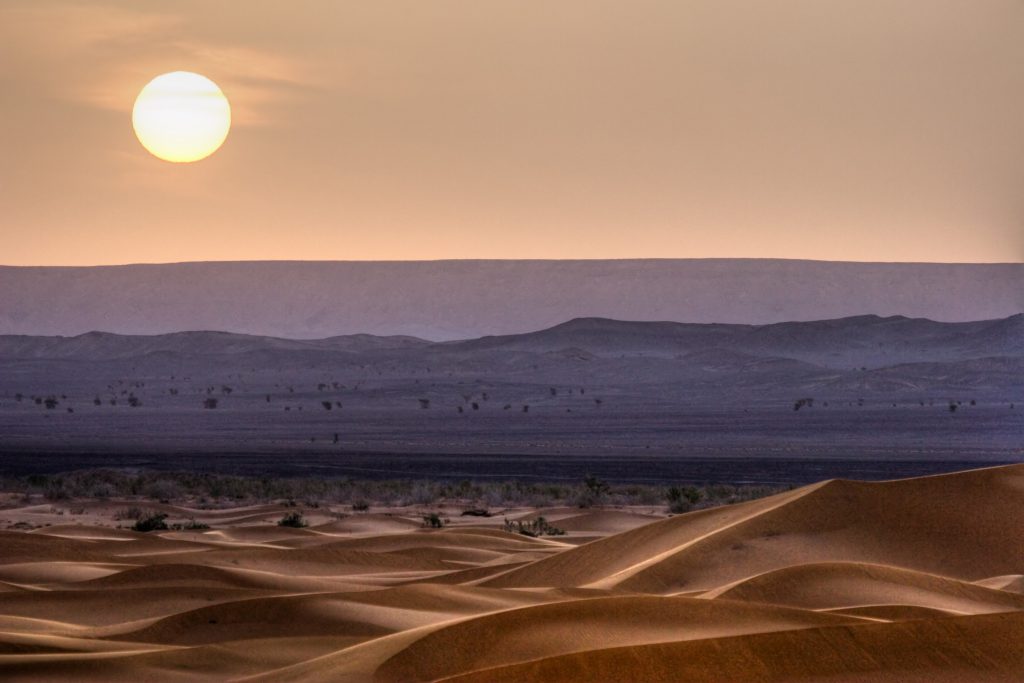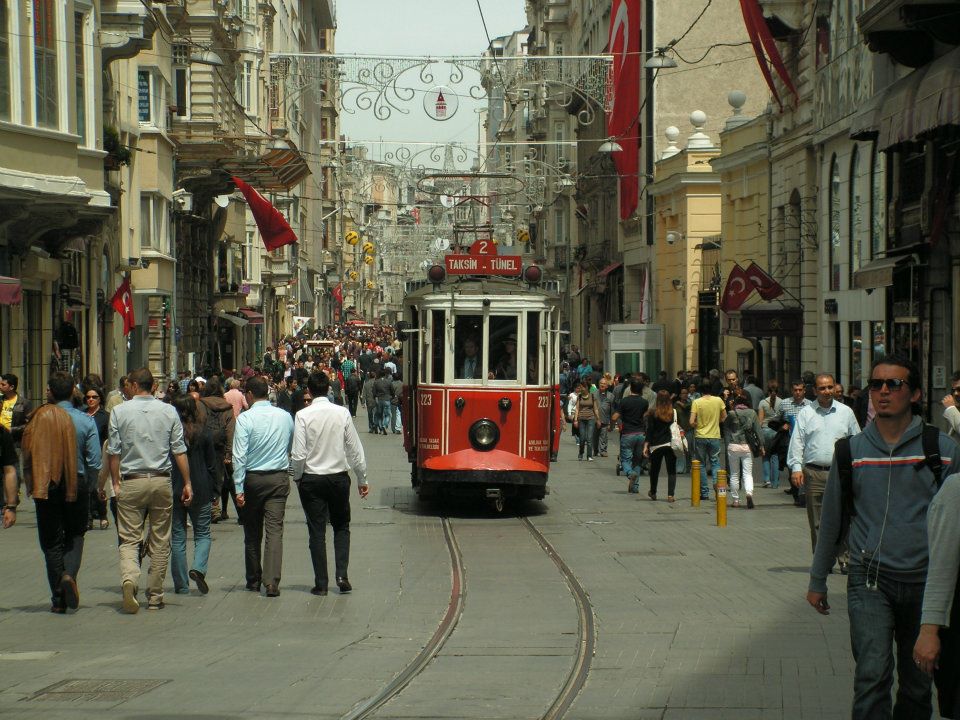OMG! A Sold-Out Burning Man
Well…
I decided to make the pilgrimage to better understand a world I had immersed myself in, downtown Las Vegas, where Zappos CEO Tony Hsieh is investing a portion of his personal fortune into what he hopes will become a sustainable entrepreneurial ecosystem. There are streaks of Burning Man everywhere (e.g., a 40 ft.-praying mantis spews out fire every night near the new Zappos campus), and I wanted to see the inspiration for myself.
But getting to my destination proved to be more expensive and challenging than I ever anticipated. Tickets are $380, and factoring in transportation, camp dues, and basic survival gear, it cost around $2,000 just to get through the gate—the bare minimum by most standards. For many of the 70,000 revelers, expenses skyrocket well past that amount. Black Rock City still operates as a sharing (or “gifting”) economy, but commercialization lies just beyond the festival’s borders.
You’ll only need 200-something items…
I found an at-value ticket in mid-August, which was lucky, because the last-minute “OMG” tickets were already sold out. To claim my ticket, I met my seller at a luxury apartment building in downtown Las Vegas, where I was greeted by two 20-somethings who presented the golden ticket while playing guitar and wearing rabbit ears. Along with it, they handed me an official Burning Man Survival Guide outlining the festival’s 10 principles.
“You have to prepare for everything,” a longtime burner warned me. “The weather can be extreme and highly unpredictable.” In Black Rock City, temperatures often reach over 100ºF during the day and can dip below freezing once the sun sets. Windstorms are a normal occurrence, and in whiteout conditions, winds can reach around 70mph. “Survival first,” she stressed. “Costumes last.” Having moved to Las Vegas with just two suitcases only a few weeks prior, I barely had enough everyday clothing on hand, nevertheless survival gear or costumes.
An acquaintance shared with me a Google doc with her 200-some item list of supplies, saying that she ordered everything off Amazon, but it was too late for that. Instead, I made the rounds between Target, Home Depot, and Walmart to cover a host of items, including goggles (night vision and regular), LED lights, cold-weather gear and boots (to protect against the alkaline dust).
“Will this bike work?” asked my friend Ian, who looked oversized sitting on a small pink child’s bike underneath the florescent lights at Target near the outskirts of the city. At around $100, it was the cheapest option to take to Black Rock City, so I went with it, trying to be practical—though it didn’t last long on the playa. When I finally reached the cash register, my card declined three times; a US Bank representative told me that racking up such a high bill at a Las Vegas Target qualified as unusual activity.
Walking through the store aisles, I was simultaneously on the phone with the person who might be subleasing my Encino apartment for the year. Worried that the cost of Burning Man might make my bank account go negative, I asked her, “Is there any way you could wire the security deposit this week?”
Thankfully she did.
Planes, trains and automobiles
I was determined make it to Black Rock City, and there was no turning back.

I contemplated flying to Reno and renting a car alone (which easily would have doubled my budget), and even asked an acquaintance if I could helicopter in with him and a friend, but they didn’t have room. I finally sent a mass email out to some downtown Las Vegas residents, but no one responded. To no avail, I joined a Las Vegas Burning Man Group on Facebook, and landed a ride with two strangers nearly hours before they were leaving. I quickly went to the nearest Bank of America to wire them transportation costs and secure my place. It felt like the equivalent of modern-day hitchhiking.
If finding a ride was a feat in itself, so was finding a camp. Earlier that summer a Silicon Valley entrepreneur alluded to finding one for me, but in the final days before the event, all of his friends’ camps were full. Through a Burning Man meet-up event at the GoldSpike, I met the owner of a Las Vegas entertainment company, who graciously invited me to join his group. Dues to join the camp were only around $150 plus two bottles of hard alcohol—quite reasonable by most standards—and the base volunteer requirement was taking on shifts pouring drinks for revelers to attract them to the camp’s 24/7 sound stage. Several of my camp mates worked on the Last Vegas Strip as DJs, burlesque dancers and promoters, and Burning Man was just an extension of their daily lives.
So much for showers
Soon after arriving, I discovered that three things I usually take for granted would become luxuries on the playa: bathing, sleeping, and eating regular food. The shower at my camp — a makeshift pulley system built on a wooden structure and encapsulated in blue tarp—broke early on, so I gave up on traditional showers for the rest of the week. Because our camp was located just off the Esplanade, the road closest to the center of all activity, music from the art cars waxed and waned throughout the night, making it difficult to fall asleep at any hour. During the day, I learned, it was simply too hot to sleep inside a tent under the desert sun (I also noted that next time I’d bring a battery-powered fan).
Longtime burners had told me that “you can find anything you need” on the playa, and while in some respects that’s truer in Black Rock City than anywhere else, some things were elusive. There was one occasion where I decided to search for fresh fruit, only to look up and see a young man carrying a crate of oranges, but that was the exception. Mostly I lived off of Cliff bars and water, and when I received a dinner invitation to another camp one evening, I gladly accepted.
With the camp’s address written on my arm (there is no Internet or cell phone service on most of the playa), I walked into a space that was cordoned off by air-conditioned luxury RVs. A woman with a clipboard stood at the entrance of the dining tent, checking off names for the chef-prepared meals, and stopped me before I could go any further. “I’m sorry,” she said. “Your name isn’t on the list.” Instead, a friend brought out a bag of Cheeze-Its and a soda from the refreshment table, and we stood outside until dinner was over.
Earlier that day, I had ventured to the edge of the deep playa.
Surrounded by miles of white dust and looking over the hazy horizon, an eerie silence filled the air, with the temporary city far off in the distance. That’s a place I’d like to visit again, but unfortunately not this summer— it’s too expensive.








































Leave a Reply